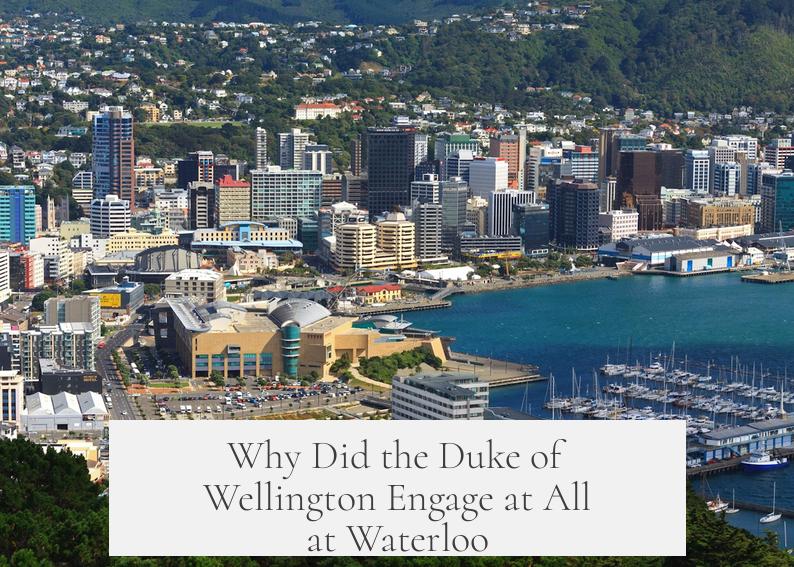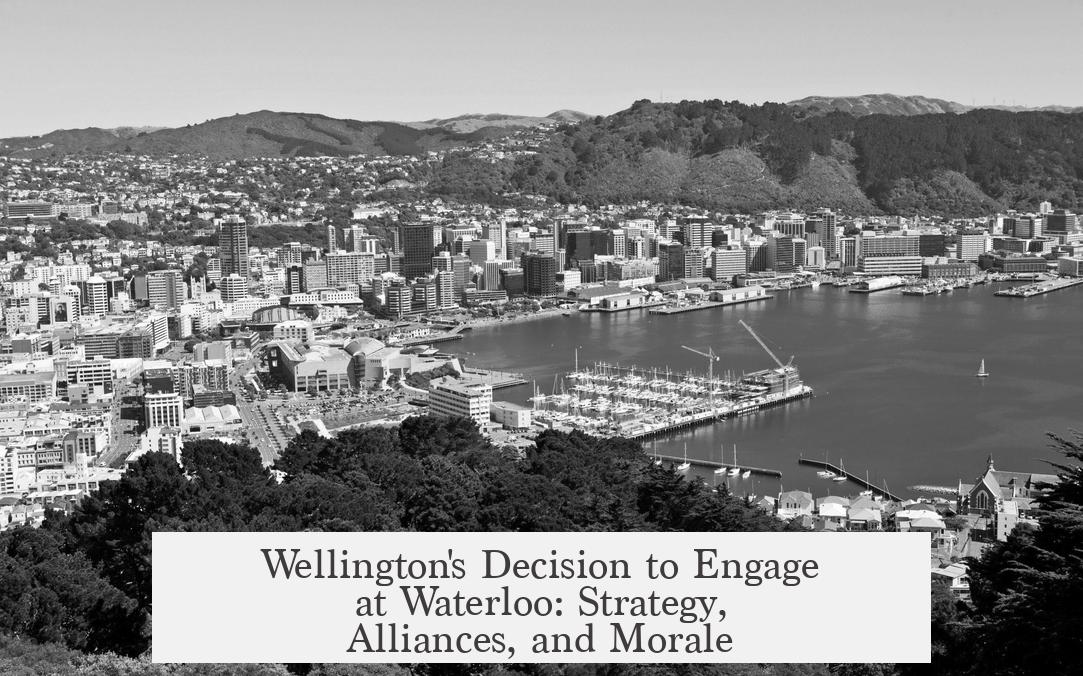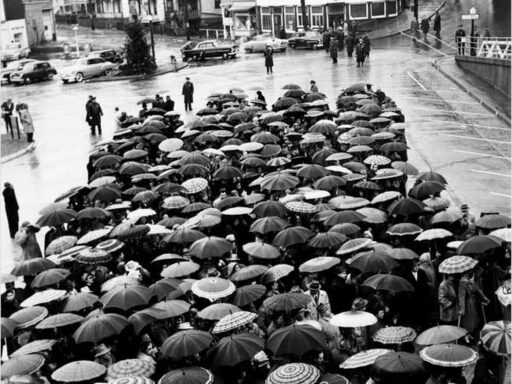The Duke of Wellington engaged at Waterloo primarily because he sought to fight a defensive battle on terrain he had chosen and prepared, saw retreat as impractical given the French army’s speed, relied on the timely arrival of Prussian reinforcements, and recognized the moral and strategic necessity of standing firm to defend coalition territory and maintain army morale.
Wellington’s approach was heavily influenced by his preference for defense over offense. Although capable of launching decisive attacks, he typically favored a defensive stance. He selected the battlefield at Waterloo well in advance, having surveyed the area a year earlier. The location offered excellent defensive advantages, including strong natural features and farmhouses suitable for fortification. His meticulous planning made him comfortable implementing his strategies from prepared positions rather than engaging in open battle without preparation.
One key tactical advantage came from Mont Saint-Jean Ridge. Wellington deployed his troops behind this ridge, a tactic known as the reverse slope. Positioning forces just behind the crest protected them from French artillery fire and concealed their exact disposition. As French troops advanced, they emerged over the ridge unaware of the precise British positions, often exposing themselves in disorganized marching formations. This confusion made it difficult for the French to quickly form proper battle lines and left them vulnerable to British volleys.
The French held superiority in artillery numbers, but the reverse slope neutralized much of this advantage. Artillery firing uphill through the ridge became less effective. This geography significantly reduced French firepower impact. Additionally, Wellington used sturdy farmhouses at key points on the battlefield as strongholds. These positions anchored his defensive line and slowed French advances, affording the allied forces crucial time to organize counterattacks or reinforce weak points.
Retreat was not a viable option for Wellington. The French army, under Napoleon, was notably swift and agile, capable of rapid marches that outpaced allied forces. French troops travelled light, favoring speed and maneuverability over logistical security. In contrast, allied forces, particularly the British, operated with heavier and more conservative supply trains, which limited their ability to retreat quickly and safely. Wellington understood that attempting a withdrawal could expose his forces to rapid pursuit and possible destruction before they could regroup. Standing to fight at a chosen strongpoint was the safer, more rational choice.
Another critical factor was Wellington’s coordination with Prussian allies. He knew the Prussians were not retreating but instead advancing to support the coalition army. This intelligence was not shared or clear to the French command. Wellington gambled on the Prussians arriving in time to help turn the tide. Retreating would have separated his forces from the Prussians, leaving each vulnerable to defeat separately—a classic Napoleon strategy to “defeat enemies in detail.” Maintaining proximity was vital for mutual support during the battle.
The decision to engage also carries significant moral and strategic weight. Wellington led a coalition campaign to defend territory important to several allied nations, including the key city of Brussels. Retreating would risk demoralizing his multinational force, possibly undermining confidence in his leadership. His role as a commander extended beyond military calculus; maintaining credibility and morale was essential to sustain a unified effort against Napoleon.
In summary, Wellington’s engagement at Waterloo came down to leveraging terrain advantage and defensive tactics, avoiding a dangerous retreat, trusting in allied reinforcements, and preserving the morale and cohesion of a coalition army. His preference for a well-prepared defense and his understanding of both strategic and psychological factors led him to commit fully to the battle.
- Wellington favored defense and chose Waterloo for its preparatory advantages.
- Mont Saint-Jean Ridge and reverse slope tactics shielded troops and disrupted French attacks.
- Retreat was impractical due to French army speed and allied logistical constraints.
- Coordination with advancing Prussian forces was a key strategic consideration.
- Engagement maintained coalition morale and Wellington’s credibility as a commander.
Why Did the Duke of Wellington Engage at All at Waterloo?

The Duke of Wellington engaged at Waterloo because retreat was not a viable option against Napoleon’s fast-moving army, and he chose terrain he had prepared that maximized his defensive strengths while enabling coordination with Prussian allies. This decision wasn’t a snap call but the result of careful forethought, a realistic view of opposing forces, and a personal philosophy grounded in defense. Let’s unpack why he fought when many might have chosen flight.
Imagine you’re facing Napoleon, a military genius known for lightning-fast marches and brutal tactics. The French army’s speed and tactical edge aren’t just rumors—they’re battlefield facts. Wellington knows that if he retreats, Napoleon could quickly pivot and annihilate his other enemy, the Prussians. So stepping onto the field at Waterloo wasn’t reckless; it was calculated, almost inevitable.
Wellington’s Defensive Mindset and Preparation
Wellington is a defensive commander at heart. Unlike some generals who thrive on bold offensives, he prefers to wait and strike only when conditions favor him. In fact, he scouts locations well in advance. A full year before the battle, he surveys Waterloo, sizing it up as a stronghold. This isn’t just terrain; it’s a chessboard tailored to his strategy, crafted to give his troops the best defense possible.
He’s meticulous—Wellington doesn’t like surprises unless they’re his own. His comfort zone is a well-planned defense, where he positions his forces to minimize weakness and maximize stubborn resistance. That’s exactly what he’s building at Waterloo.
The Tactical Genius of Terrain: Mont Saint-Jean Ridge
Wellington’s favorite tactic at Waterloo is the reverse slope. This clever move places troops just behind the ridge of Mont Saint-Jean, shielding them from French artillery fire and, crucially, from being spotted early. The French can’t see Wellington’s forces until they crest the ridge, often stumbling into British lines still in marching formation—a nightmare when bullets start flying.
This concealed deployment turns the battlefield into a trap. The French artillery, although superior in number, struggles to target troops hidden behind the ridge. This terrain advantage means Wellington’s forces avoid the punishing artillery barrages that might have otherwise shredded their lines.
Additionally, solid farmhouses scattered across the field become fortified strongpoints. These serve as defensive anchors that slow the French advance, buying time for British forces to respond and adjust. The line is anchored, the ground is familiar, and every feature is used to Wellington’s advantage—no detail left to chance.
Retreat? Not a Practical Option

Could Wellington have just pulled back? In theory, yes. In practice, no. The French army is famously fast, partly because of lean logistics—carrying less baggage, they move swiftly and strike hard. The British supply train, while reliable, is heavy and slow. Trying to outpace Napoleon’s forces under those conditions would be courting disaster.
More importantly, a retreat risks the French executing their favored strategy: defeating enemies one by one. If Wellington withdrew, Napoleon might chase him and crush the British. Meanwhile, the Prussians, still in the game, could be overwhelmed without British support. Staying put at Waterloo means maintaining a critical link to allied forces.
Alliance and The Prussian Factor
Wellington isn’t just fighting for England; he’s commanding a coalition. Critical to his decision to engage is what he knows—and the French do not: the Prussians are advancing and have not beaten a retreat. Betting on their arrival, Wellington chooses Waterloo because it’s close enough to aid and be aided by them.
This alliance is no small matter. Napoleon excels at separating and crushing isolated foes. By standing ground, Wellington thwarts that play, forcing a prolonged engagement until the Prussians join in. Staying operationally close means mutual support—a lifeline in this brutal contest.
The Honor and Morale Imperative
Waterloo isn’t just a military stake; it’s a moral and political one. The battle stands between Napoleon and Brussels—a key territory Wellington must defend. His coalition troops include many who have a personal stake in the land they defend.
Retreat could demoralize these soldiers, shaking their faith in leadership and the cause. Wellington knows that morale can turn the tide as much as bullets. A rout on his watch would damage his credibility and fracture the coalition fighting Napoleon’s expansion.
So, honor and duty weigh heavily. Fighting at Waterloo means preserving faith in leadership, keeping spirits strong, and showing that the army will not yield territory without a fight.
A Unique Perspective on Wellington’s Choice

Why engage at Waterloo? Because it’s more than a battle; it’s a carefully staged gamble on terrain, timing, alliances, and morale. Wellington harnesses his defensive doctrine, transforming the battlefield into a fortress where French advantages shrink. By leveraging Mont Saint-Jean’s ridge and reverse slope tactics, he blunts the French artillery and confuses assaulting troops. The solid farmhouse strongpoints tie the defense together.
The fast-moving French and their lean logistics make retreat dangerous and possibly suicidal. Wellington refuses to be outmaneuvered by Napoleon’s genius. Instead, he waits for the Prussians’ arrival to turn a one-on-one showdown into a coalition victory.
And beneath all that strategy lies a simple truth: Wellington’s sense of honor and leadership drives him to fight rather than withdraw, knowing the psychological weight of his decision has consequences beyond just the battlefield.
Lessons for Modern Leaders and Strategists
- Preparation Pays Off: Wellington’s year-long study of Waterloo showcases the power of foresight and reconnaissance.
- Terrain Is an Ally: Using environmental features creatively can neutralize an enemy’s strengths.
- Know Your Enemy and Yourself: Wellington understands both his own limitations and Napoleon’s capabilities, adjusting his tactics accordingly.
- Alliances Matter: Coordination and trust in partners can change the course of a battle.
- Morale and Reputation Count: Sometimes the psychological battlefield is just as critical as the physical one.
So next time you wonder why Wellington engaged at Waterloo, remember this wasn’t reckless bravery but a masterclass in defense, alliance management, and battlefield psychology. He stood firm because sometimes, standing your ground is the wisest move of all.
Why did Wellington choose to fight at Waterloo rather than retreat?
Wellington saw battle as unavoidable due to the fast-moving French army. Retreating would have allowed Napoleon to defeat the Prussians separately. Wellington chose a strong defensive position to maximize his chances.
How did terrain influence Wellington’s decision to engage at Waterloo?
He picked the Mont Saint-Jean Ridge for its defensive benefits. The reverse slope tactic shielded troops from French artillery and allowed surprise attacks. Solid farmhouses served as strongpoints to slow the French advance.
What role did coordination with the Prussians play in Wellington’s engagement?
Wellington knew the Prussians were advancing to support him. Staying close ensured mutual support. Retreating would have let Napoleon defeat them separately, which Wellington wanted to avoid.
Why was Wellington comfortable fighting defensively instead of offensively?
He was a defensive commander who preferred fighting on prepared ground. He spent a year studying Waterloo’s terrain, choosing a spot where he could control the battle and use carefully planned tactics.
How did logistical differences between the British and French affect Wellington’s choice to engage?
The French moved faster with lighter supplies. The British were slower due to heavier supply trains. Wellington knew he couldn’t outpace the French and had to pick a strong, defensible position to force a battle.




